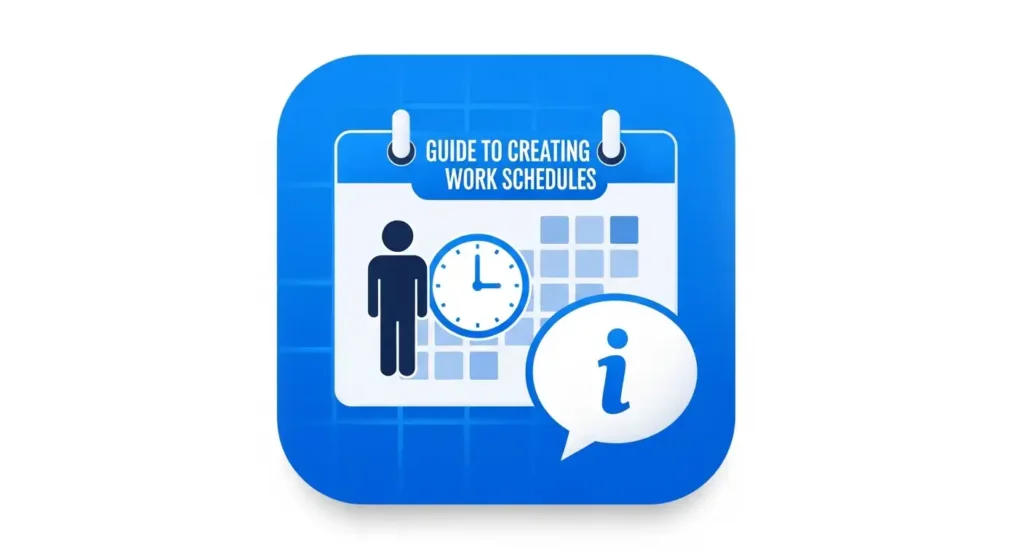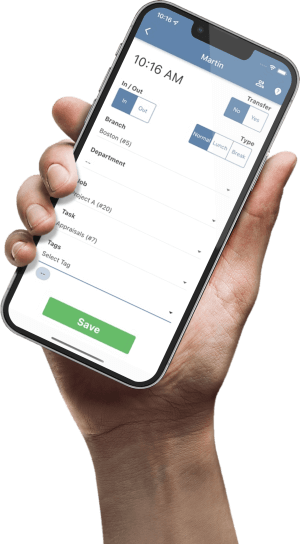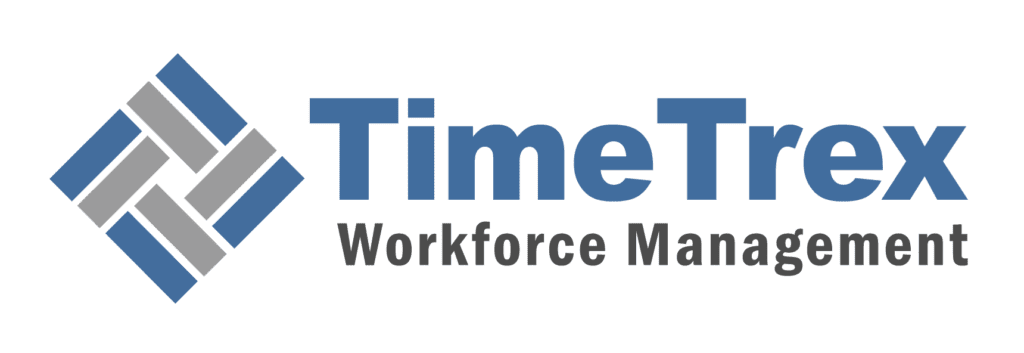
Guide to Creating Employee Work Schedules
Mastering employee work schedules has evolved from a simple administrative task into a strategic imperative. For modern businesses, effective workforce scheduling is a critical lever for managing labor costs, boosting operational efficiency, ensuring legal compliance, and winning the war for talent. A well-designed employee schedule directly impacts profitability and productivity. This guide provides a definitive framework for creating and managing employee work schedules, helping managers achieve a perfect balance between operational demands, workforce well-being, and financial goals. Adopting a strategic, data-driven, and technology-enabled approach to creating employee work schedules is essential for success.
TL;DR
Effective employee scheduling is a strategic business function, not just an administrative task. The optimal schedule balances three pillars: operational demands, workforce well-being, and financial prudence. This guide outlines a data-driven, step-by-step process for building schedules, from forecasting demand to continuous monitoring. It emphasizes navigating the complex legal landscape of the FLSA and predictive scheduling laws ("Fair Workweek"). It also compares various scheduling models (fixed, rotating, flexible) and contrasts manual methods with the efficiency and compliance benefits of modern scheduling software. Adopting a strategic, tech-enabled approach to scheduling is essential for sustainable success.
On This Page
- The Strategic Framework of Workforce Scheduling
- A Comprehensive Guide to the Scheduling Process
- Navigating the Legal and Compliance Maze
- Models and Methodologies for Modern Scheduling
- Leveraging Technology for Optimal Scheduling
- Advanced Strategies and Troubleshooting Common Challenges
- Industry-Specific Scheduling Playbooks
- Discover the Best Scheduling Tools
The Strategic Framework of Workforce Scheduling
Beyond the Rota: Scheduling as a Core Business Function
Effective employee scheduling transcends the tactical process of assigning shifts; it is a strategic management function with profound impacts on an organization. The schedule serves as the operational blueprint that dictates how a business meets customer demand, controls costs, and manages its people.
Direct Impact on Business Performance
Cost Management: For many businesses, labor is the largest controllable expense. Strategic scheduling aligns staffing with demand, preventing the financial drain of overstaffing and minimizing costly overtime. An optimized schedule ensures every labor dollar is spent productively.
Operational Efficiency: The goal is to have the right number of employees with the right skills in the right place at the right time. This prevents service bottlenecks, reduces customer wait times, and maximizes productivity for a smooth customer experience.
The Human Capital Connection
Employee Satisfaction & Retention: Predictable and fair schedules are linked to higher job satisfaction and better work-life balance. By demonstrating respect for employees' time, organizations can significantly reduce costly absenteeism and turnover. The schedule itself has become a tangible benefit.
Engagement and Productivity: When employees feel their needs are considered, their engagement increases. A scheduling process that incorporates employee preferences fosters a sense of respect, leading to a more committed and productive workforce.
The Three Pillars of Effective Scheduling
Creating the optimal employee schedule is a complex balancing act. A successful strategy is supported by three essential pillars, and the goal is to maintain a dynamic equilibrium among them.
- Pillar 1: Business Needs & Operational Demands: This represents the fundamental requirements for the business to function. It includes ensuring complete coverage during peak hours and matching employee skills to specific tasks.
- Pillar 2: Workforce Well-being & Morale: This pillar focuses on the human element. It involves creating schedules that are predictable, fair, and flexible, accommodating time-off requests, and promoting a healthy work-life balance to prevent burnout.
- Pillar 3: Financial Prudence & Labor Cost Control: This represents the fiscal responsibilities of the organization. It's centered on managing labor costs by minimizing overtime and aligning the labor budget with revenue forecasts.
An excessive focus on one pillar weakens the others. Modern technology, especially scheduling software, acts as the fulcrum, processing all these variables simultaneously to make this strategic balancing act achievable.
A Comprehensive Guide to the Scheduling Process
Step 1 - Foundational Analysis & Demand Forecasting
The cornerstone of modern scheduling is a shift from intuition to a data-driven approach. Accurate forecasting is essential to align staffing levels with business needs. This begins with gathering historical data from multiple sources, such as Point of Sale (POS) systems, customer traffic counters, and operational metrics.
Step 2 - Understanding Your Workforce: Availability and Skills
After determining business needs, the next step is to understand the capacity and capabilities of your workforce. Gathering employee availability should be a formal, ongoing process using digital tools like employee self-service portals. It's also vital to maintain a detailed inventory of each employee's skills, qualifications, and performance metrics.
Step 3 - Establishing Clear & Fair Scheduling Policies
A well-defined set of policies provides consistency, ensures fairness, and manages expectations. These policies should be documented and communicated clearly. Key areas to define include schedule publication lead times, time-off request procedures, shift swapping rules, and overtime distribution.
Step 4 - Building & Optimizing the Schedule
With a foundation of data and policies, you can build the schedule. Using schedule templates for different business volumes can save significant time. The process should involve blocking out approved absences first, then scheduling key personnel for critical shifts, and finally filling the remaining shifts while balancing fairness and workloads.
Step 5 - Communication, Publication & Continuous Improvement
The finalized schedule must be communicated with sufficient advance notice via a reliable, accessible platform like a mobile app. The process doesn't end there; it continues with monitoring key metrics (e.g., actual vs. scheduled hours), gathering employee feedback, and making iterative adjustments to improve the system over time.
Navigating the Legal and Compliance Maze
Employee scheduling is governed by a complex web of federal, state, and local laws. Failure to comply can result in significant financial penalties. A robust understanding of legal requirements is a foundational component of any scheduling strategy.
Federal Mandates: FLSA, Overtime, and Breaks
The primary federal law is the Fair Labor Standards Act (FLSA). It establishes the 40-hour workweek and requires overtime pay (1.5x the regular rate) for non-exempt employees for all hours worked over 40 in a workweek. The FLSA does not federally mandate meal or rest breaks, but if offered, short breaks (5-20 minutes) must be paid.
The Rise of Predictive Scheduling: State and Local "Fair Workweek" Laws
A growing number of states and cities have enacted "Fair Workweek" or predictive scheduling laws. These laws address the challenges of unpredictable schedules by mandating advance notice and imposing penalties for last-minute changes. Common provisions include:
- Advance Notice: Typically requiring schedules to be posted 14 days in advance.
- Predictability Pay: Penalties paid to employees for employer-initiated schedule changes with insufficient notice.
- Right to Rest (Anti-"Clopening"): Prohibiting scheduling employees for back-to-back closing and opening shifts without a minimum rest period (e.g., 10-11 hours).
- Access to Hours: Requiring employers to offer available hours to existing part-time staff before hiring new employees.
| Jurisdiction | Covered Industries/Employers | Advance Notice | Predictability Pay | Right to Rest | Access to Hours |
|---|---|---|---|---|---|
| Oregon | Retail, Hospitality, Food Service (500+ employees) | 14 calendar days | Yes | 10 hours | No |
| Chicago, IL | Restaurants, Retail, Healthcare, Hotels (100+ employees) | 14 calendar days | Yes | 10 hours | Yes |
| New York City, NY | Fast Food (30+ locations), Retail (20+ employees) | 14 days (Fast Food), 72 hours (Retail) | Yes (Fast Food) | 11 hours (Fast Food) | Yes (Fast Food) |
| Philadelphia, PA | Retail, Hospitality, Food Service (250+ employees) | 14 calendar days | Yes | 9 hours | Yes |
| Seattle, WA | Retail, Food Service (500+ employees) | 14 calendar days | Yes | 10 hours | Yes |
State-by-State Meal and Rest Break Requirements
While the FLSA sets a minimal standard, a majority of states have enacted their own laws providing greater protections. For example, California requires a 30-minute unpaid meal break for shifts over five hours and a paid 10-minute rest break for every four hours worked. These variations make a location-aware compliance engine within scheduling software an essential tool.
Models and Methodologies for Modern Scheduling
A Comparative Analysis of Scheduling Models
Choosing the right scheduling model is a strategic decision. Each model presents unique advantages and disadvantages.
| Model | Description | Pros | Cons |
|---|---|---|---|
| Fixed | Employees work the same days and hours each week. | High predictability for employees; simple for managers. | Inflexible; can lead to skill imbalances on unpopular shifts. |
| Rotating | Employees cycle through different shifts (day, evening, night). | Fair distribution of undesirable shifts; promotes cross-training. | Disrupts sleep patterns and work-life balance. |
| Flexible (Flextime) | Employees choose start/end times around core hours. | Increased employee autonomy and morale. | Can be difficult to coordinate team activities. |
| Compressed | Full-time hours worked in fewer than five days (e.g., 4/10s). | Provides extra days off for employees. | Longer days can cause fatigue and reduce focus. |
| On-Call | Employees must be available to work on short notice. | Maximum flexibility for unpredictable demand. | Creates instability for employees; heavily regulated. |
The Manual vs. Automated Scheduling Divide
The choice between traditional methods (pen & paper, spreadsheets) and modern software has significant implications. Manual methods are time-consuming, prone to error, and make compliance nearly impossible to manage. Automated scheduling software addresses these weaknesses by dramatically reducing administrative time, minimizing errors, ensuring compliance with built-in rule engines, and empowering employees with self-service tools.
Leveraging Technology for Optimal Scheduling
Anatomy of Modern Scheduling Software
Effective scheduling software is a multi-faceted platform. Core features include shift planning with AI-powered auto-scheduling, employee self-service via mobile apps, and centralized communication. Advanced capabilities include compliance engines that flag potential legal violations, AI-powered labor forecasting, and robust reporting and analytics for data-driven decisions.
| Feature Category | Specific Feature | Business Value |
|---|---|---|
| Core Scheduling | Auto-Scheduling | Reduces schedule creation time by up to 80%; minimizes errors. |
| Employee Tools | Mobile App & Self-Service | Empowers employees, improves work-life balance, reduces admin tasks. |
| Time & Attendance | Integrated Time Clock | Provides accurate digital timesheets, eliminating payroll errors. |
| Advanced Analytics | Compliance Engine | Mitigates legal risk, avoids fines, ensures fair scheduling. |
| System Integration | Payroll & HRIS Integration | Streamlines payroll, eliminates duplicate data entry, ensures accuracy. |
Selecting the Right Scheduling Solution for 2025
The right platform requires a careful assessment of your organization's needs. Key considerations include business size, industry-specific requirements, and compliance challenges. SMBs might prioritize all-in-one solutions, while businesses in highly regulated areas need a platform with a powerful compliance engine. Businesses with mobile workforces will need robust GPS tracking and field service features.
Advanced Strategies and Troubleshooting Common Challenges
Proactive Management of Scheduling Disruptions
Last-minute absences are a major disruptor. A proactive strategy includes establishing a clear call-out policy, building a contingency plan (like a standby pool), and leveraging technology. Modern scheduling software can broadcast an open shift to all qualified and available employees simultaneously, filling gaps in minutes.
Fairness in Practice: Managing Time-Off and Shift Swaps
To handle competing time-off requests fairly, develop a transparent prioritization policy (e.g., first-come, first-served or seniority-based). Automate the request process through software and empower employees with a self-service system for shift swapping, which gives them control and reduces the manager's workload.
Scheduling to Prevent Employee Burnout
Scheduling practices are a primary tool for preventing burnout. Use analytics to monitor workloads and distribute hours fairly. Enforce adequate rest periods by using software rules to prevent "clopening," and promote a culture that encourages employees to disconnect and use their vacation time.
Industry-Specific Scheduling Playbooks
Retail
Retail scheduling is defined by high demand volatility. The key strategy is demand-based scheduling, using POS data to align staffing with customer traffic. Also, use performance-based scheduling to place top sales associates during peak hours and embrace cross-training to create a flexible workforce.
Hospitality
The hospitality industry faces extreme demand swings and high turnover. The playbook involves forecasting with booking and event data from property management systems. Cross-departmental training is paramount for flexibility. A focus on employee empowerment through fair scheduling can be a powerful retention tool.
Healthcare
Healthcare scheduling is the most complex, with non-negotiable 24/7 coverage and strict credentialing rules. The strategy requires credential-based scheduling, where software tracks licenses and prevents unqualified assignments. Preventing burnout through fair workload distribution and enforced rest periods is critical for patient safety and staff retention.
Conclusion: Discover the Best Scheduling Tools
The future of scheduling is here, defined by AI-driven optimization, employee-centric flexibility, and ironclad compliance management. Organizations that embrace this evolution will build workforces that are productive, cost-effective, and engaged. Relying on outdated manual methods is no longer a viable option.
Ready to Modernize Your Scheduling?
Explore our curated list of the best workplace scheduling apps and find the perfect solution to save time, reduce labor costs, and empower your team.
Find the Best Scheduling App for Your BusinessDisclaimer: The content provided on this webpage is for informational purposes only and is not intended to be a substitute for professional advice. While we strive to ensure the accuracy and timeliness of the information presented here, the details may change over time or vary in different jurisdictions. Therefore, we do not guarantee the completeness, reliability, or absolute accuracy of this information. The information on this page should not be used as a basis for making legal, financial, or any other key decisions. We strongly advise consulting with a qualified professional or expert in the relevant field for specific advice, guidance, or services. By using this webpage, you acknowledge that the information is offered “as is” and that we are not liable for any errors, omissions, or inaccuracies in the content, nor for any actions taken based on the information provided. We shall not be held liable for any direct, indirect, incidental, consequential, or punitive damages arising out of your access to, use of, or reliance on any content on this page.
About The Author

Roger Wood
With a Baccalaureate of Science and advanced studies in business, Roger has successfully managed businesses across five continents. His extensive global experience and strategic insights contribute significantly to the success of TimeTrex. His expertise and dedication ensure we deliver top-notch solutions to our clients around the world.
Time To Clock-In
Start your 30-day free trial!
Experience the Ultimate Workforce Solution and Revolutionize Your Business Today
- Eliminate Errors
- Simple & Easy To Use
- Real-time Reporting

Saving businesses time and money through better workforce management since 2003.
Copyright © 2025 TimeTrex. All Rights Reserved.
